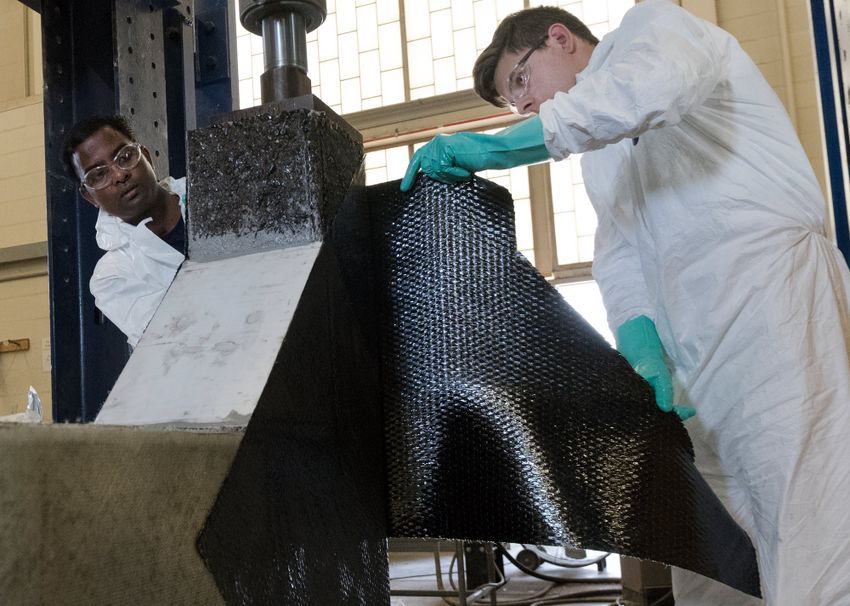The Solution
Statler College engineers have developed the NextGen Multifunctional Composite System,
which can increase load capacity for certain structures by using a simple devise
as a quality fix to increase resistance to blasts, earthquakes and hurricanes.
If properly field implemented, the NextGen Multifunctional Composite System can
save millions of housing structure from collapsing due to wind, blast and seismic
forces. It can also save thousands of lives and billions of dollars in terms of
retrofit of in-service housing systems.
 The NextGen Composite System, which is designed to impact the material,
manufacturing and design markets, utilizes sustainable materials, high-precision
manufacturing techniques, optimized design strategies, cost-effective construction
and rehab techniques and minimally intrusive nondestructive evaluation methods.
Hota GangaRao, the Maurice and JoAnn Wadsworth Distinguished Professor of Civil
and Environmental Engineering at WVU, and former doctoral candidate Praveen Majjigapu,
created the three-piece invention consisting of filler modules — wedge-like parts
made to certain specifications — reinforcing dowels and composite materials that
allow buildings and bridges to resist heavier loads while providing a significant
amount of shock absorption as well as moisture and fire resistance.
The NextGen Composite System, which is designed to impact the material,
manufacturing and design markets, utilizes sustainable materials, high-precision
manufacturing techniques, optimized design strategies, cost-effective construction
and rehab techniques and minimally intrusive nondestructive evaluation methods.
Hota GangaRao, the Maurice and JoAnn Wadsworth Distinguished Professor of Civil
and Environmental Engineering at WVU, and former doctoral candidate Praveen Majjigapu,
created the three-piece invention consisting of filler modules — wedge-like parts
made to certain specifications — reinforcing dowels and composite materials that
allow buildings and bridges to resist heavier loads while providing a significant
amount of shock absorption as well as moisture and fire resistance.
These new composites technologies are paving the way for numerous structural applications
in infrastructure, aerospace, defense, automotive, marine, furniture, recreational
and other industries. In addition, these developments/inventions are leading to
reduced maintenance while providing pleasing aesthetics both in structural and
non-structural applications. Effective utilization of our advances in the fields
of military and civil infrastructure, especially in terms of rehabilitation of
in-service systems, will not only save lives under extreme events such as earthquakes
and hurricanes but also accrue large sums of dollars while enhancing worker productivity.